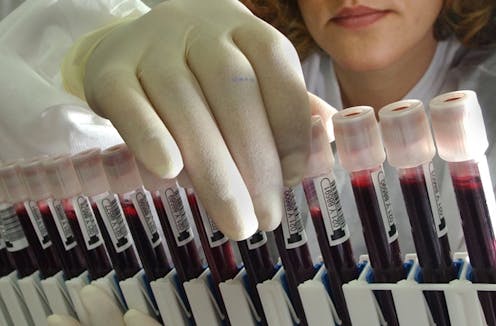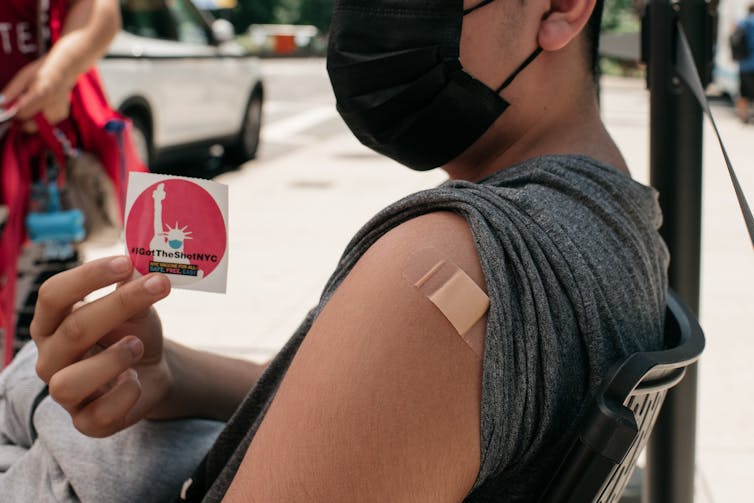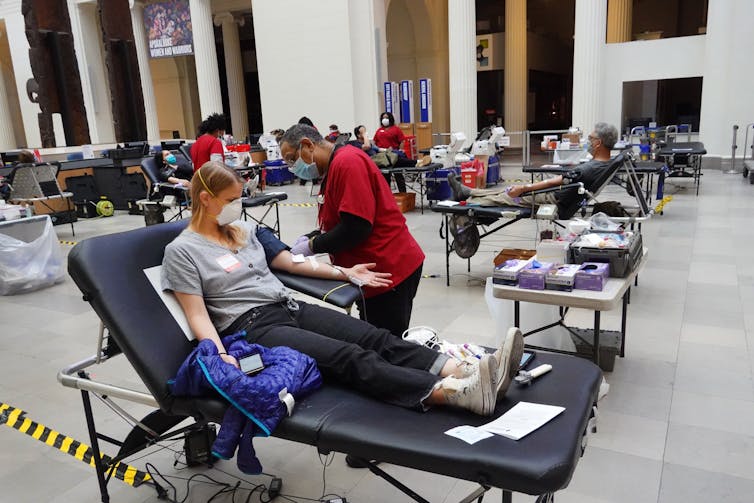COVID-19 official counts can miss mild cases – here's how serosurveys that analyze blood for signs o
Your blood can hold a record of past illnesses. That information can reveal how many people have had a certain infection – like 58% of Americans having had COVID-19 by the end of February 2022.

It’s an eye-catching statistic: 58% of the whole population and 75% of kids in the U.S. had been infected by the coronavirus by the end of February 2022. That’s a pretty big jump from the official case count that hovered around a quarter of Americans having been diagnosed with COVID-19. A report from the U.S. Centers for Disease Control and Prevention based these higher proportions on what’s called a serosurvey: a study that looks at people’s blood to see if they’ve had a particular illness.
Isobel Routledge is an infectious disease epidemiologist who uses serosurveys in her own research. Here she explains the science behind the approach and what a serosurvey can – and can’t – tell you.
What does a serosurvey look for?
When you’re infected by or vaccinated against a pathogen, like the SARS-CoV-2 virus that causes COVID-19, your body produces antibodies to fight it. Some types of antibodies remain in your blood long after you’ve recovered. During a serosurvey, researchers look in blood samples for these long-lasting antibodies. They act as markers of past exposure to the pathogen.
The power of this type of study is that it can reveal whether someone was previously infected with a particular pathogen, even if they didn’t have symptoms or take a test. Having specific antibodies in your blood can also mean you’re immune to a certain disease – scientists are still investigating what the markers of protection against COVID-19 might be, though.
If they test enough blood samples – ideally through a random sample of the population – researchers can use a serosurvey to estimate the proportion of a population that has been previously infected or vaccinated, and in some cases estimate the proportion of the population that is immune to a particular disease.

Can serosurveys tell the difference between an infection and vaccination?
Yes. In a recent study, my colleagues and I wanted to separate out those who had been previously infected with SARS-CoV-2 and those who had been vaccinated. So we looked for two different bio-markers in the blood samples.
Vaccines administered in the U.S. trigger your body to produce antibodies to a particular part of the SARS-CoV-2 virus called the spike protein. If we identified antibodies to the spike protein, that means a person could have been vaccinated, been previously infected with SARS-CoV-2, or both.
When people are naturally infected with SARS-CoV-2, they produce antibodies to another part of the coronavirus called the nucleocapsid protein. If we identified antibodies to the nucleocapsid protein, then we knew the patient had previously contracted COVID-19. Vaccination doesn’t trigger these particular antibodies. The CDC study used this type of test to separate out only those who were previously infected.
How far back in time can this method ‘see’?
Antibodies take a few weeks to build up to their maximum level. Then their concentration wanes in the weeks and months after exposure to an infectious disease.
Colleagues of mine at the University of California, San Francisco are currently studying the dynamics of this process for COVID-19 in the Long-term Impact of Infection With Novel Coronavirus (LIINC) study. Since March 2020, they’ve been following volunteers who’ve recovered from COVID-19, collecting blood and saliva samples at regular intervals to monitor changes in antibody levels.
Based on over a year of observations, the team estimated that someone who had previously had COVID-19 could test negative on an antibody test on average anywhere between 96 and 925 days after their infection. It seems to depend a lot on disease severity and the specific test used.
Several tests, including the one used in the recent CDC study, showed no evidence of any decrease in detecting antibodies over six months of observation. Additional studies using a different test found that the majority of patients had detectable levels of nucleocapsid antibodies in the blood at a year and at 16 months after infection.
The CDC study looked at blood samples collected between September 2021 and February 2022, which was at most two years after anyone would have contracted COVID-19. Based on current evidence, I’d not too concerned about a lot of false negatives based on how long ago people were infected. However, if there were some missed infections in this study, that would mean that the true proportion of the population that was previously infected is slightly more than the estimated 58%.
Why are serosurveys important to do?
Traditional disease surveillance measures, such as counts of reported cases or positive tests, are super important for monitoring the spread and burden of infectious diseases. But for a disease like COVID-19 that can cause lots of asymptomatic and mild infections, the numbers of reported cases may represent only the tip of the iceberg.
Case counts often miss asymptomatic infections, as well as infections in those who do not have access to health care or testing. It can also be tricky to compare data from disease surveillance systems over time and in different places.
Serosurveys are a way of capturing asymptomatic and unreported infections, and a well-designed serosurvey can often provide a “truer” picture of infection history in a population than case counts. But serosurveys have their own, separate biases.
What factors make a serosurvey tricky to do well?
You need to consider who is in the group you’ve taken your samples from and whether they’re representative of the wider U.S. in terms of demographics, including location, age, biological sex, race/ethnicity, socioeconomic status, occupation and so on. Otherwise your finding might not be generalizable to the population as a whole.

Many studies, including the CDC report and my own work, rely on what’s called convenience sampling. We piggyback on blood samples that were initially collected for clinical testing or blood donation and then reuse them for the serosurvey. This means we’re only including people who are getting blood tests for health conditions or checkups, or those donating blood. We’re missing out on parts of the U.S. population who don’t access health care or donate blood.
Randomly selecting a representative sample of the entire population can get around those biases. However, this kind of study is extremely expensive and time-consuming to carry out. Just a small number have been conducted at the state level.
A further challenge is defining the threshold for considering an antibody test as positive or negative. These tests measure the concentration of a particular antibody in the sample. Antibody responses can vary depending on the severity of illness and time since infection. If researchers set the cutoff for a positive result too high, it can lead to more false negatives.
The recent CDC serosurvey acknowledged some limitations in how generalizable it really is. No data on race/ethnicity was available to weight the study results, and the study was likely to have over-represented people who could seek health care. If the antibody test was less accurate with mild or older infections, the true proportion of the population that was previously exposed could have been even higher than the 58% estimate. Despite these limitations, this study does provide hugely valuable data for tracking changes in SARS-CoV-2 transmission over time.
Isobel Routledge receives funding from the National Institutes of Health.
Read These Next
How the ‘slayer rule’ might play a role in determining who will inherit wealth from Rob Reiner and h
These rules have a long history in the United States. They played a role in the notorious murders by…
From truce in the trenches to cocktails at the consulate: How Christmas diplomacy seeks to exploit s
World leaders like to talk up peace at Christmastime. But alongside the tales of seasonal breaks in…
As DOJ begins to release Epstein files, his many victims deserve more attention than the powerful me
Powerful men connected to Jeffrey Epstein are named, dissected and speculated about. The survivors,…






